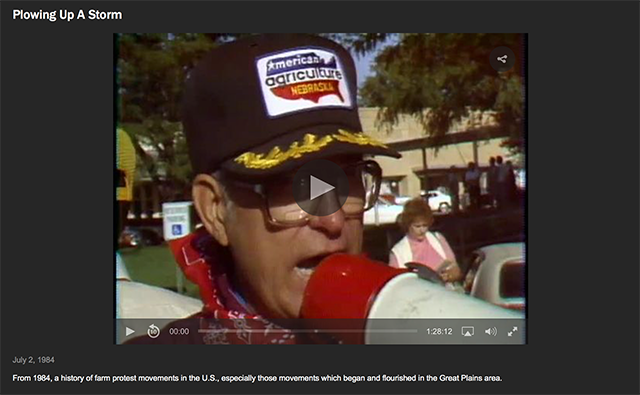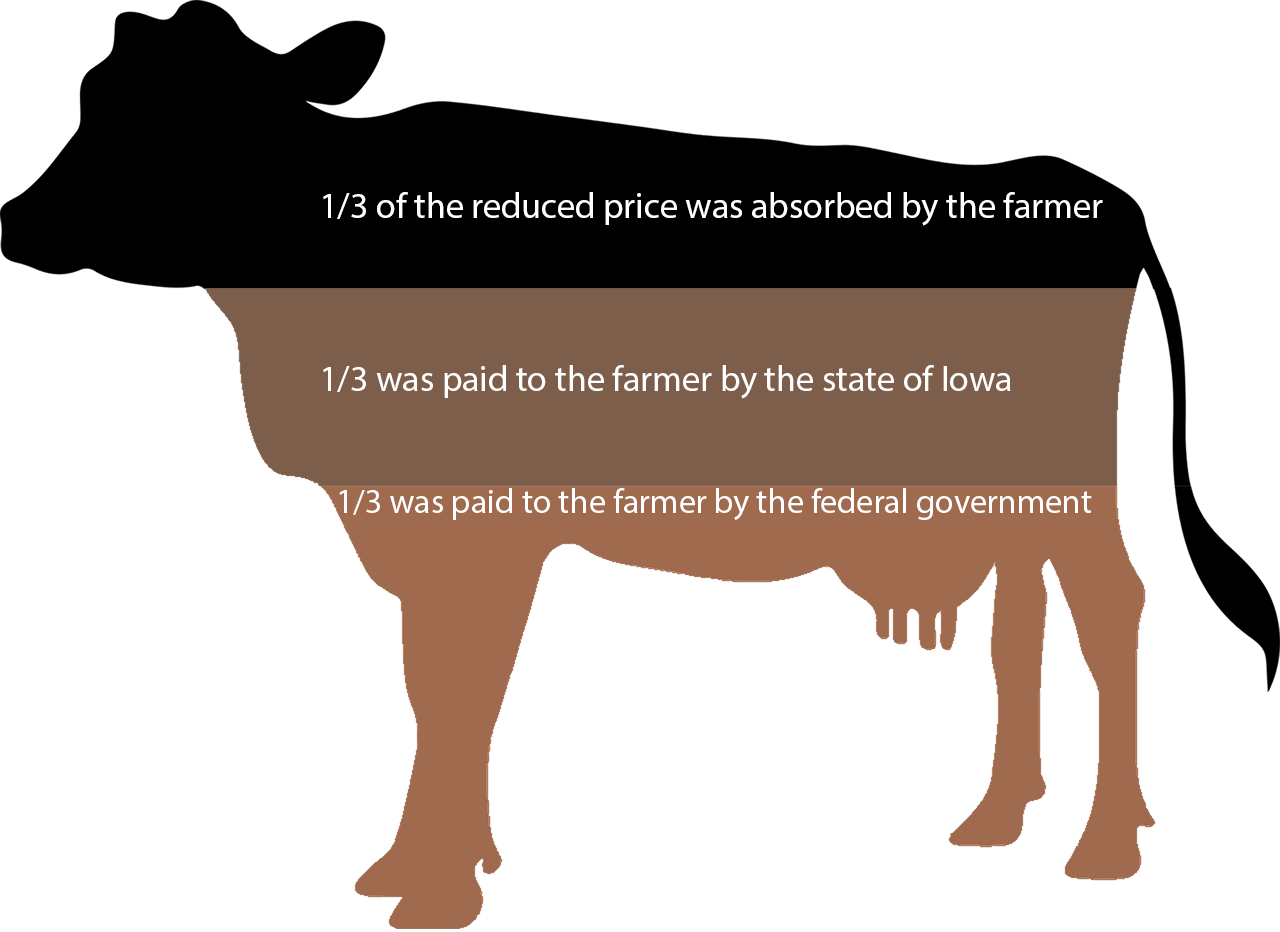Introduction
Throughout the twentieth century, farmers in Iowa and the Midwest struggled to make a living off their land and hard work. Post-war price busts and the Great Depression only exacerbated the general erosion in farm parity as increasing costs of production were not matched by an increase in farm commodity prices. In response, farmers organized in an effort to move from being victims of the economic and social situation to self-determined shapers of action. In this exhibit, we take a closer look at mobilization of farmers to confront and obstruct tuberculosis testing of cattle and the auction of foreclosed farms during the Iowa Cow Wars and Farmers’ Holiday of the early 1930s, the commodity holding actions of the National Farmers Organization, and the activism for farm laborer rights in the 1960s. The exhibit will cover the actions and methods used by farm owners and laborers as well as how they leveraged the media to affect change.
Pricing and the factors that led to protest 1
It is important to examine why this time period sparked activism within the farming community. There were several factors that made the business of farming increasingly expensive, but the prices farmers received for their goods did not keep up.
During WWI there was a boom in both production and prices to provide food for the troops. After the war, as farming methods became more efficient, farmers were still producing high levels of food but the prices bottomed out. While much of the country was enjoying the increased financial success of the 1920s, the largely agricultural farm economy of Iowa was already suffering before the Great Depression even started.2
After the conclusion of WWII, there was another decline in farm prices during the 1950s. There were many contributing factors including growing costs for farming equipment and increased efficiency. Food prices for consumers were going up, but that money did not find its way back to the farmers themselves.
Before the farm protest movements, farmers were largely unorganized, so they had little power to command higher prices. Through the collective actions demonstrated throughout this exhibit, farmers attempted to correct the price disparity.
Farm Protests in the Nation

Plowing Up A Storm (Click image to go to film. Film is not embedded with closed-captioning.) - NET, 1984. 55:09 - Milo Reno and Farmer's Holiday; 59:00 - footage of strikers attacking car; 59:10 - milk dumping. Note: Film is not owned by Iowa State University Library, Special Collections and Archives.
Outcome
Although the Farmers' Holiday Association succeeded in some of its goals, such as preventing eviction through foreclosure, the results farm activism in Iowa overall were mixed. In the case of the Cow Wars, the farmers ultimately submitted to the will of the government. The NFO milk holding action was brought to an early end by the federal government’s antitrust lawsuit, but they capitalized on the momentum of the holding action to launch an All-Commodities Holding Action the following year. However, after another decade, the Farm Crisis of the 1980s revealed that farmers were still subject to broader market forces. While the League of United Latin American Citizens (LULAC) chapters in Iowa and affiliated groups made incremental gains in passing Iowa legislation to improve working and living conditions for migrant farm workers, the progress was extremely modest in the broader context of discrimination and exploitation.

Courtesy of Olivia Garrison.